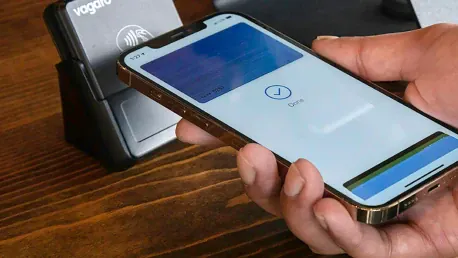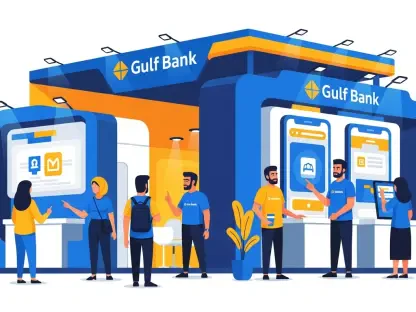Apple Pay, a mobile payment service from Apple Inc., has revolutionized the way iPhone users make transactions. With its inception, Apple Pay has become a favored payment method due to its convenience and enhanced security features. This article explores the top apps that accept Apple Pay, highlighting its integration across various digital platforms and services.
The Rise of Apple Pay
As contactless payments become increasingly popular, Apple Pay has emerged as a leader in the mobile payment industry. With its user-friendly interface, robust security features, and widespread acceptance among merchants, Apple Pay has revolutionized the way consumers make transactions. The convenience of simply tapping a device to pay, combined with the assurance of secure encryption, has made Apple Pay a preferred choice for many users. As a result, both consumers and businesses benefit from faster, more efficient transactions while enjoying enhanced security measures.
Security and Convenience
Apple Pay’s renowned security and convenience have made it a preferred choice for millions of users. When users complete transactions using Apple Pay, the service generates device-specific numbers and unique transaction codes for each purchase, replacing the conventional use of card numbers. This dynamic system significantly reduces the risk of fraudulent activities because merchants and service providers never receive actual card numbers. Instead, all transactions are encrypted and securely processed, providing peace of mind for users.
Moreover, Apple Pay eliminates the cumbersome process of repeatedly entering card details for each purchase. Users can save their credit and debit card information securely in their Apple Wallets to enable seamless transactions. This not only expedites the checkout process but also minimizes potential errors that can occur when manually inputting card information. Consequently, Apple Pay’s integration into various apps allows users to complete transactions quickly, efficiently, and securely. The blend of superior security features and unparalleled convenience has fueled Apple Pay’s widespread adoption among iPhone users.
Widespread Adoption
The success of Apple Pay can largely be attributed to its widespread adoption by major retailers, service providers, and various digital platforms. As more businesses recognize the benefits of integrating Apple Pay into their payment systems, it becomes more accessible and valuable to consumers. By ensuring compatibility with numerous apps and services, Apple Pay enhances the overall user experience by facilitating smooth and hassle-free transactions. Users are no longer burdened with the need to carry physical cards or worry about misplacing them.
Apple Pay’s compatibility spans across different sectors, allowing for its usage in a multitude of purchasing scenarios. Whether shopping for groceries, ordering food online, booking a ride, or buying movie tickets, the ubiquity of Apple Pay ensures that users can rely on a single, secure payment method. The consistent and reliable performance of Apple Pay strengthens user trust and encourages more businesses to adopt the platform, creating a ripple effect of increased acceptance and integration. As a result, the familiar “double-click to pay” process has become an integral part of countless daily transactions for iOS users.
Shopping Apps
Shopping apps have revolutionized the way consumers browse and purchase products, offering convenience and a plethora of options at their fingertips. From personalized recommendations to seamless checkout processes, these apps aim to enhance the overall shopping experience.
Major Retailers
Numerous retail giants have identified the value of integrating Apple Pay into their payment systems. This has led to its adoption by some of the largest retailers in the United States, such as the Apple Store, Best Buy, and Target. Through these partnerships, these stores offer their customers a swift and secure checkout experience enabled by Apple Pay. For instance, at Target, customers can seamlessly complete their transactions at checkout counters or through their mobile app, significantly reducing the time spent processing payments.
Furthermore, shopping apps like the Apple Store app provide a cohesive environment where users can explore products, make their purchases, and even schedule in-store pickups, all while relying on the security afforded by Apple Pay. Best Buy’s integration of Apple Pay has followed a similar trajectory. Customers can shop for electronics and other merchandise online or in-store and pay effortlessly through the mobile payment service. This streamlined process not only makes shopping more convenient but also enhances customer satisfaction by minimizing time spent on transactions and eliminating common checkout glitches.
Fashion and Specialty Stores
Fashion and specialty stores have also embraced Apple Pay, capitalizing on its secure and convenient payment system to enhance the shopping experience for their customers. Renowned fashion retailers like Macy’s and Zara facilitate seamless checkout processes through their apps, allowing customers to shop for their favorite clothing and accessories without the need to fumble with physical cards. Nike SNKRS, a specialized app for exclusive sneaker releases, also supports Apple Pay, catering to sneaker enthusiasts who value speed and security when securing limited-edition products.
Additionally, beauty and specialty stores such as Sephora and Ulta Beauty have integrated Apple Pay into their app and in-store payment systems. This adoption simplifies the purchasing process for beauty enthusiasts who can now shop for makeup, skincare, and other beauty products without the inconvenience of repeatedly entering card information. Consequently, customers can enjoy a more efficient and enjoyable shopping experience across a variety of fashion and specialty stores, underscoring the versatility and efficacy of Apple Pay in the retail sector.
Food and Drink Apps
Food and drink apps have become increasingly popular, offering users convenient ways to explore recipes, find restaurant recommendations, and order meals for delivery. These apps provide a wide range of features to enhance the dining experience, making it easier for users to enjoy their favorite foods and discover new culinary delights.
Quick-Service Restaurants
Quick-service restaurants have been quick to adopt Apple Pay, recognizing its potential to streamline the ordering and payment process for their customers. Prominent chains like Starbucks, Dunkin’, and Panera Bread offer Apple Pay as a payment option in their apps and stores. By integrating Apple Pay, these restaurants enable customers to skip tedious steps in the checkout process, allowing them to enjoy their meals sooner without the need for cash or physical credit cards.
Moreover, these integrations extend to drive-thru services and mobile app orders, providing customers with multiple convenient ways to pay. At Starbucks, for example, users can add funds to their Starbucks Card or pay directly for their orders using Apple Pay, expediting their morning coffee runs. Similar features are available at Dunkin’, where customers can swiftly order and pay ahead, ensuring that their food and drinks are ready upon arrival. Apple Pay’s role in expediting transactions is particularly valuable in the fast-paced environment of quick-service restaurants, where speed and convenience are paramount.
Food Delivery Services
The rise of food delivery services has further highlighted the importance of secure and efficient payment methods like Apple Pay. Popular platforms such as Postmates, DoorDash, Uber Eats, and Grubhub have incorporated Apple Pay into their payment options, providing users with a smooth, secure checkout process. By using Apple Pay, customers can order food from their favorite restaurants, complete the transaction in a few taps, and have their meals delivered to their doorstep without any complications.
Moreover, the integration of Apple Pay in these delivery apps enhances the overall user experience by simplifying the order and payment processes. There is no need to manually enter credit card details, reducing the likelihood of input errors. In addition, the security features of Apple Pay protect users’ financial information, making it a trustworthy option for digital payments. For food delivery services, integrating Apple Pay helps build consumer confidence and loyalty, knowing that their transactions are safeguarded and their orders are processed efficiently.
Travel Apps
Travel apps have revolutionized the way people plan and manage their journeys, providing convenient tools for booking flights, accommodations, and activities. With features like real-time notifications and itinerary organization, these apps have made travel more accessible and stress-free. Popular travel apps also offer recommendations and reviews, helping travelers make informed decisions and discover hidden gems in their destinations. Whether you’re a frequent flyer or a casual explorer, travel apps have become an indispensable companion in navigating the world.
Ride-Sharing Services
Apple Pay has significantly impacted the travel industry, particularly within the realm of ride-sharing services. Leading companies like Uber and Lyft have integrated Apple Pay into their platforms, offering users a straightforward and secure payment option for booking rides. By accepting Apple Pay, these ride-sharing apps not only simplify the payment process but also reassure users about the protection of their financial information during each ride transaction.
For many commuters and travelers, the convenience of using a single payment method across various services is highly appealing. With Apple Pay, Uber and Lyft users can effortlessly book rides, eliminate the need to carry cash, and avoid issues related to processing credit cards. Additionally, the integration ensures that users can complete their transactions with a few taps, reducing waiting times and enhancing the overall ride-booking experience. This seamless payment process further solidifies Apple Pay’s role as a go-to choice for frequent travelers seeking hassle-free transportation solutions.
Booking and Accommodation
Within the travel sector, Apple Pay has also found its way into booking and accommodation services. Leading platforms like Expedia, Airbnb, and HotelTonight have included Apple Pay as a payment option, providing a secure and efficient way to book flights, accommodations, and other travel-related services. This integration simplifies the travel planning process, allowing users to focus on their itineraries without worrying about payment issues.
For instance, when booking a stay on Airbnb, users can quickly complete their transactions using Apple Pay, ensuring that their payment information is handled securely. Similarly, HotelTonight offers the ability to book last-minute hotel deals and pay instantly through Apple Pay, making the experience both convenient and reliable. By streamlining the payment process, Apple Pay enhances user confidence and satisfaction, making it easier for travelers to finalize their plans and enjoy their trips without unnecessary stress or delays.
Entertainment Apps
Movie and Event Tickets
Apple Pay’s influence extends to the entertainment industry, where it has been integrated into apps for movie and event ticket purchases. Services like Fandango, Ticketmaster, and StubHub have adopted Apple Pay to facilitate a quick and secure checkout process for users buying tickets to their favorite movies, concerts, and events. This integration significantly reduces the time spent on transactions and eliminates the need for manually entering card details, offering a more enjoyable user experience.
Fixed version:
For example, when purchasing movie tickets through Fandango, users can select their showtimes, choose their seats, and complete the transaction effortlessly using Apple Pay. Similarly, event-goers can buy tickets to concerts, theater shows, and sports events through Ticketmaster and StubHub, with Apple Pay ensuring smooth and secure payment processing. The convenience and reliability provided by Apple Pay enhance the overall experience, allowing users to focus on anticipating the event rather than dealing with potential payment complications.
Discount and Deal Apps
Apple Pay has also made its mark on apps focused on discounts and deals, such as Groupon. By integrating Apple Pay into their platforms, these apps provide a seamless and secure payment method for users seeking to access various deals and offers. Apple Pay’s presence in these apps enhances the user experience by streamlining the purchasing process and ensuring the protection of financial information.
For instance, Groupon users can explore an array of discount offers across categories like dining, travel, and activities, and quickly purchase the deals using Apple Pay. The integration of Apple Pay eliminates the need for repeatedly entering card information, reducing the risk of errors and denials during the purchasing process. This capability allows users to focus on enjoying the benefits of their deals, knowing that their transactions have been securely and efficiently processed.
Notable Exceptions
Amazon
Despite Apple Pay’s broad acceptance across numerous apps and services, there are notable exceptions to its widespread integration. One of the most significant exceptions is Amazon, which currently does not directly accept Apple Pay on its website or app. This exclusion means that users need to rely on alternative payment methods when shopping on Amazon, such as using credit or debit cards directly, Amazon Pay, or gift cards.
This decision by Amazon has puzzled some users, considering the sheer volume and frequency of transactions conducted on the platform. However, Amazon has opted to continue with its established payment methods, which may prioritize the integration of its own Amazon Pay service. While this limitation might be inconvenient for Apple Pay enthusiasts, it does not significantly undermine Apple Pay’s overall utility, given its widespread acceptance in other prominent sectors.
Walmart
Another notable exception is Walmart, which has chosen to implement its proprietary payment system, Walmart Pay, instead of adopting Apple Pay. This decision means that customers shopping at Walmart must rely on Walmart Pay for their transactions rather than the more universally accepted Apple Pay. Walmart Pay works through the Walmart app, allowing users to link their credit and debit cards and complete payments by scanning a QR code at the checkout.
Walmart’s strategic choice to focus on its payment system shows a commitment to building a unique ecosystem for its customers. Nevertheless, this creates a divergence from the convenience of using a single payment method like Apple Pay across various stores and services. While Walmart Pay offers its benefits, the lack of Apple Pay integration at Walmart is an exception that stands out in the otherwise extensive acceptance of Apple Pay in the retail landscape.
Compatibility Across Apple Devices
iPhones and iPads
Apple Pay’s seamless functionality across various Apple devices, including iPhones and iPads, is a cornerstone of its appeal. Users can set up their credit and debit cards in the Wallet app, which then allows for quick and secure in-store and in-app purchases. The process is further enhanced on devices equipped with Face ID or Touch ID, offering an added layer of security and convenience. Users can authorize payments securely by looking at their device or placing their finger on the sensor, ensuring that transactions are both swift and protected.
The integration of Apple Pay across iPhones and iPads means that users can enjoy the same benefits regardless of the device they use. Whether purchasing items from an e-commerce app, shopping at a physical store, or paying for services online, the consistency of Apple Pay’s functionality provides a cohesive and reliable experience. This uniformity fosters user confidence, knowing that their preferred payment method works seamlessly across their Apple ecosystem.
Macs and Apple Watches
The compatibility of Apple Pay extends beyond mobile devices, encompassing Macs and Apple Watches to offer a comprehensive payment solution for various scenarios. On Macs with Touch ID, users can authenticate online purchases in Safari easily. This feature is particularly advantageous for those who frequently shop online, as it eliminates the need for entering card details manually and ensures that transactions are authenticated securely.
Apple Watches further enhance the convenience of Apple Pay by offering wrist-based payments that do not require an iPhone during the transaction process. Users can set up Apple Pay on their Apple Watch and make contactless payments by simply holding their watch near a payment terminal. This capability is especially useful for quick purchases on the go, such as paying for public transportation or grabbing a coffee, without the need to retrieve one’s phone or wallet. The versatility of Apple Pay across Macs and Apple Watches exemplifies how the service adapts to various user needs and scenarios.
Enhancing User Experience
To improve user experience, companies are increasingly focusing on intuitive design, faster response times, and personalized content. Enhanced user interfaces and straightforward navigation are key aspects that drive user satisfaction and retention. Additionally, employing advanced technology like machine learning can help in anticipating user needs and providing relevant suggestions, thus fostering a more engaging and efficient interaction. As a result, businesses can achieve higher customer loyalty and better overall performance.
Streamlined Checkout Process
The integration of Apple Pay in various apps is a game-changer for enhancing the user experience, as it provides a streamlined checkout process that saves time and minimizes hassle. Users no longer need to input card information repeatedly, reducing both the time taken for transactions and the risk of errors. The seamless nature of Apple Pay’s checkout process is particularly beneficial for frequent shoppers and those who make regular transactions, as it ensures a faster and more efficient purchasing experience.
Moreover, the consistency of Apple Pay’s functionality across different apps and services means that users can rely on a uniform payment method regardless of where they shop or what they purchase. This uniformity simplifies the user’s payment experience and eliminates the need for managing multiple payment methods for different platforms. Whether shopping online or in-store, ordering food, or booking travel, the streamlined checkout process provided by Apple Pay significantly enhances overall convenience and user satisfaction.
Security Assurance
Apple Pay, a cutting-edge mobile payment service developed by Apple Inc., has significantly transformed the way iPhone users conduct transactions. Since its launch, Apple Pay has gained immense popularity owing to its ease of use and robust security measures. This article delves into the top applications that accept Apple Pay, showcasing its widespread adoption across multiple digital platforms and services.
Apple Pay’s integration into various sectors such as retail, food delivery, entertainment, and even transportation has made it an essential tool for modern financial transactions. Retailers like Target, Walgreens, and Best Buy have adopted Apple Pay, offering customers a smooth, contactless payment experience. Food delivery and ride-sharing services, including Uber Eats and Lyft, have also embraced this technology, streamlining payment processes for users on the go.
Furthermore, entertainment platforms like Fandango and Airbnb now support Apple Pay, enhancing user convenience by enabling quick and secure payments. Even public transportation systems in cities like New York, Chicago, and San Francisco have integrated Apple Pay, allowing commuters to pay their fares effortlessly with their iPhones or Apple Watches.
In summary, Apple Pay has not only made transactions more convenient but has also elevated security standards in digital payments. Its extensive acceptance across various apps and services underscores its growing significance in the digital economy.









